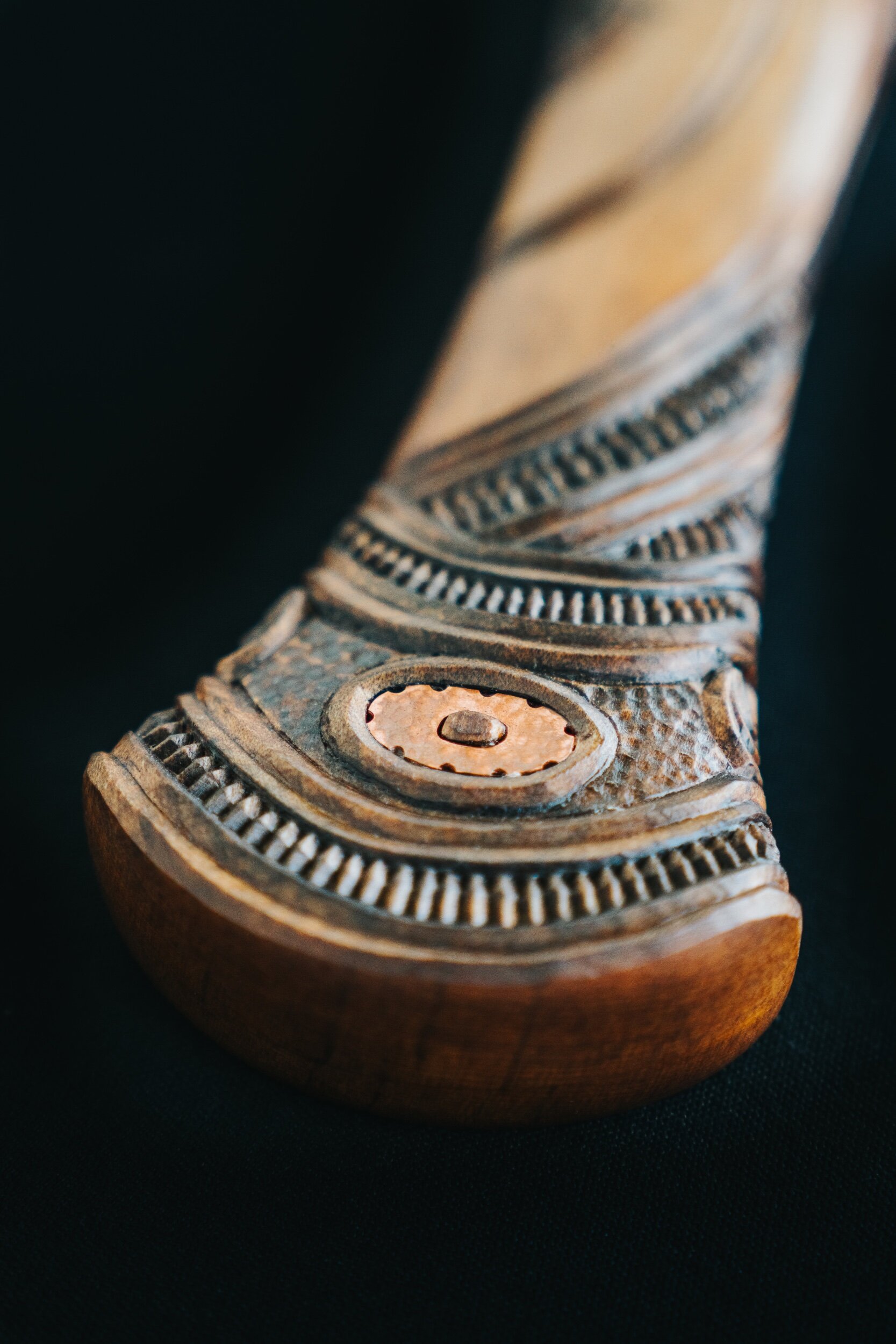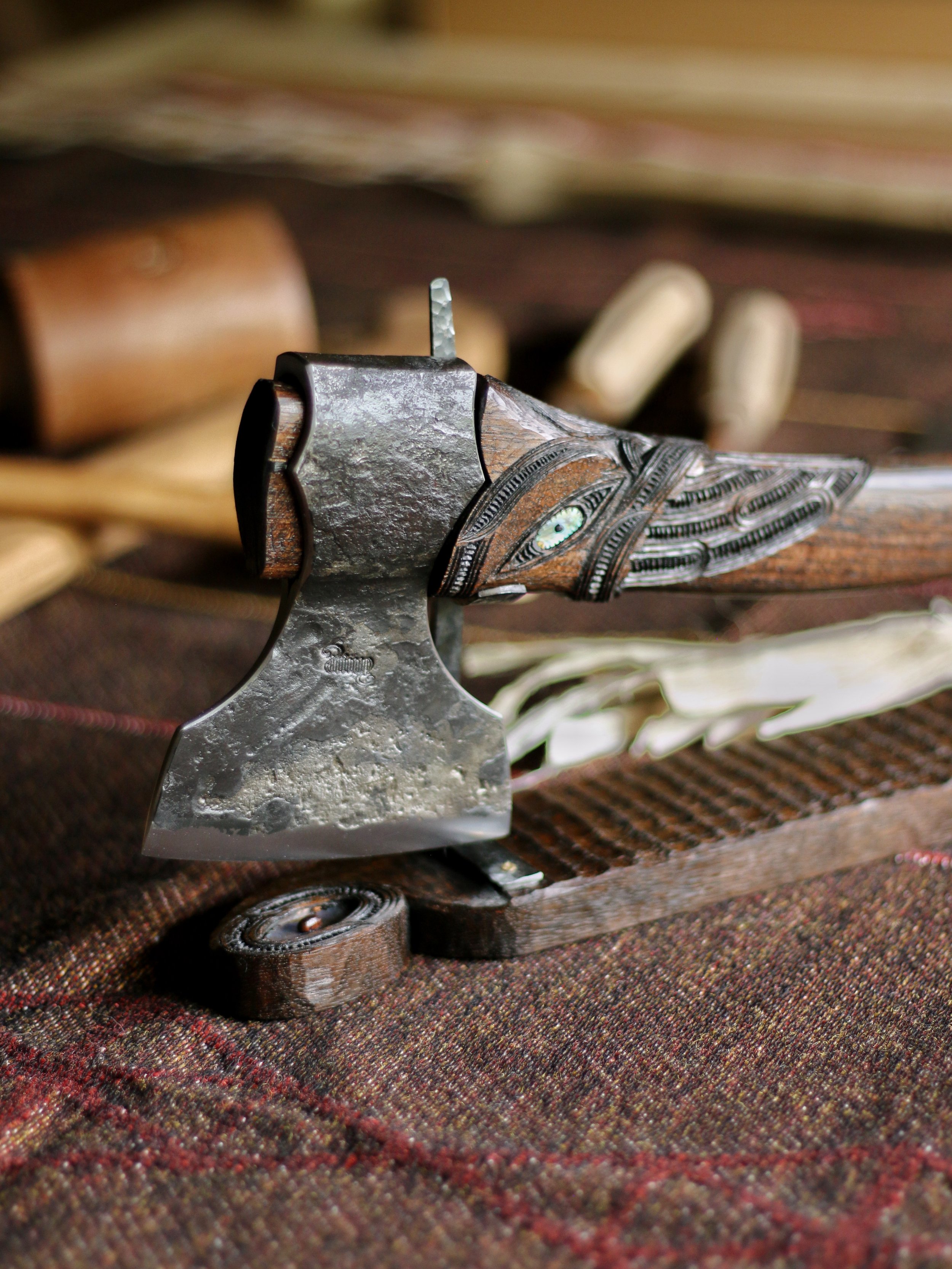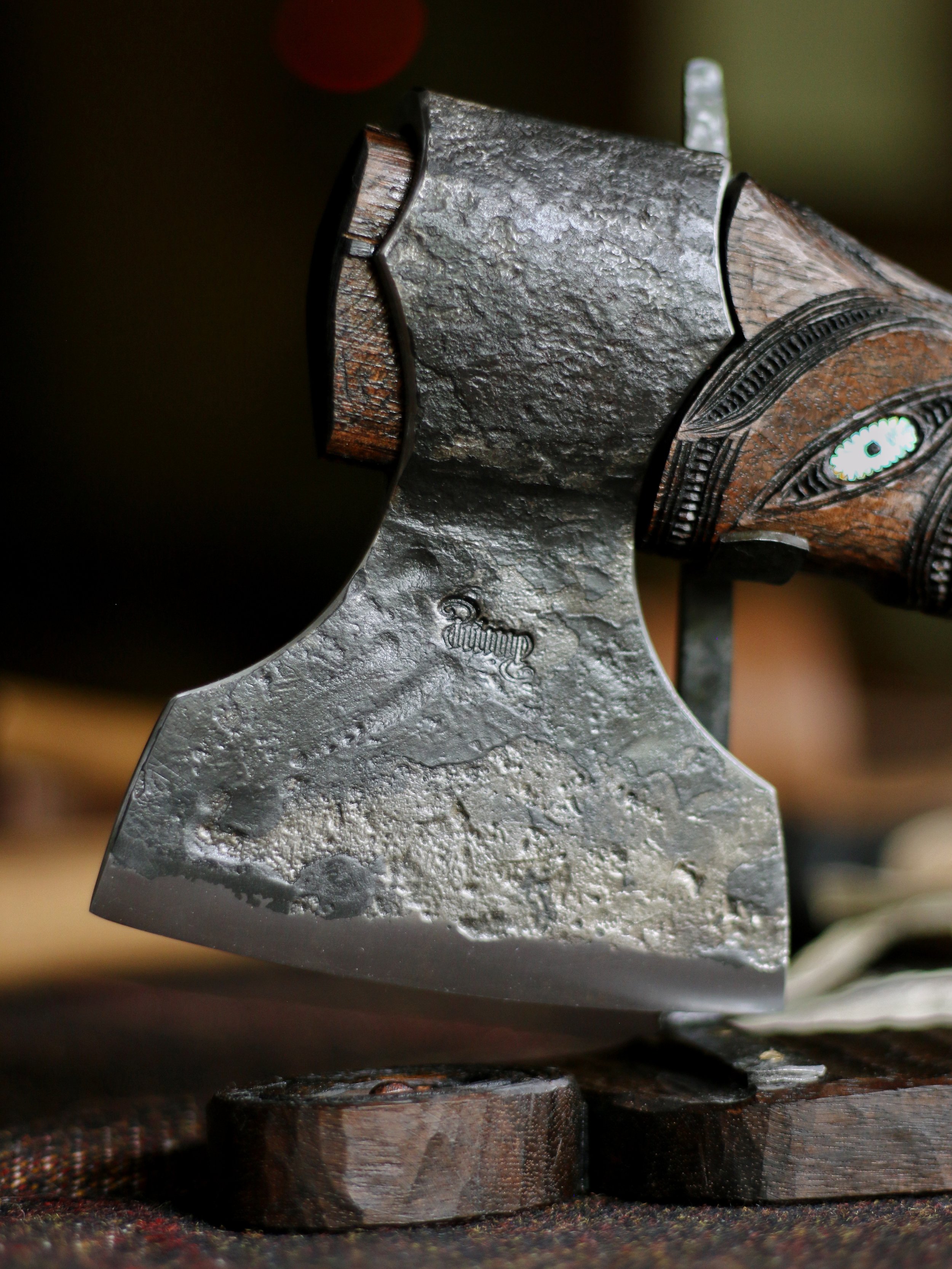 Image 1 of 11
Image 1 of 11

 Image 2 of 11
Image 2 of 11

 Image 3 of 11
Image 3 of 11

 Image 4 of 11
Image 4 of 11

 Image 5 of 11
Image 5 of 11

 Image 6 of 11
Image 6 of 11

 Image 7 of 11
Image 7 of 11

 Image 8 of 11
Image 8 of 11

 Image 9 of 11
Image 9 of 11

 Image 10 of 11
Image 10 of 11

 Image 11 of 11
Image 11 of 11












Nihoroa III
Description:
Blade: Forged from antique ship chain.
Handle and scabbard: Ebonised swamp kauri. Copper and wrought iron fittings, black maire peg.
Blade length: 330mm
Length: 550mm
Length incl. scabbard: 580mm
A contemporary take on traditional Māori weaponry, this award winning Māori taonga is an idea hand-forged into being in a seamless blend of form and function, and meticulously hand-carved by well respected Māori artist A.J. Prime.
The idea: what if Japanese weapon-making technology and Maōri carving combined to create modern art.
The result is this type of long knife I call a nihoroa*. The blade is forged from vintage ship chain, salvaged from the Wellington wharves. The handle has been hand-carved from New Zealand native swamp kauri.
The blade and all its fittings are held together by a single wooden peg, just like Japanese swords. This peg can be pressed out and the whole piece disassembled for maintenance and care.
As a Māori artist, I pay tribute to the cultural parallel between Japan and Aotearoa, where a blade is made to live on through the generation and the handle and ornamentation are made, and remade, to tell the story of the next keeper of the blade. We see this practiced by some hapū (tribes) with toki poutangata (highly prized adze weapons) and katana (Japanese swords) of significance.
Perhaps one day, this piece may return to me to have a new scabbard and handle carved; and new fittings made, for the next generation.
*Nihoroa, the name of this type of blade, literally translating to long tooth (niho = tooth; roa = long)
Description:
Blade: Forged from antique ship chain.
Handle and scabbard: Ebonised swamp kauri. Copper and wrought iron fittings, black maire peg.
Blade length: 330mm
Length: 550mm
Length incl. scabbard: 580mm
A contemporary take on traditional Māori weaponry, this award winning Māori taonga is an idea hand-forged into being in a seamless blend of form and function, and meticulously hand-carved by well respected Māori artist A.J. Prime.
The idea: what if Japanese weapon-making technology and Maōri carving combined to create modern art.
The result is this type of long knife I call a nihoroa*. The blade is forged from vintage ship chain, salvaged from the Wellington wharves. The handle has been hand-carved from New Zealand native swamp kauri.
The blade and all its fittings are held together by a single wooden peg, just like Japanese swords. This peg can be pressed out and the whole piece disassembled for maintenance and care.
As a Māori artist, I pay tribute to the cultural parallel between Japan and Aotearoa, where a blade is made to live on through the generation and the handle and ornamentation are made, and remade, to tell the story of the next keeper of the blade. We see this practiced by some hapū (tribes) with toki poutangata (highly prized adze weapons) and katana (Japanese swords) of significance.
Perhaps one day, this piece may return to me to have a new scabbard and handle carved; and new fittings made, for the next generation.
*Nihoroa, the name of this type of blade, literally translating to long tooth (niho = tooth; roa = long)
Description:
Blade: Forged from antique ship chain.
Handle and scabbard: Ebonised swamp kauri. Copper and wrought iron fittings, black maire peg.
Blade length: 330mm
Length: 550mm
Length incl. scabbard: 580mm
A contemporary take on traditional Māori weaponry, this award winning Māori taonga is an idea hand-forged into being in a seamless blend of form and function, and meticulously hand-carved by well respected Māori artist A.J. Prime.
The idea: what if Japanese weapon-making technology and Maōri carving combined to create modern art.
The result is this type of long knife I call a nihoroa*. The blade is forged from vintage ship chain, salvaged from the Wellington wharves. The handle has been hand-carved from New Zealand native swamp kauri.
The blade and all its fittings are held together by a single wooden peg, just like Japanese swords. This peg can be pressed out and the whole piece disassembled for maintenance and care.
As a Māori artist, I pay tribute to the cultural parallel between Japan and Aotearoa, where a blade is made to live on through the generation and the handle and ornamentation are made, and remade, to tell the story of the next keeper of the blade. We see this practiced by some hapū (tribes) with toki poutangata (highly prized adze weapons) and katana (Japanese swords) of significance.
Perhaps one day, this piece may return to me to have a new scabbard and handle carved; and new fittings made, for the next generation.
*Nihoroa, the name of this type of blade, literally translating to long tooth (niho = tooth; roa = long)
Find me on Instagram to see more of my processes

























